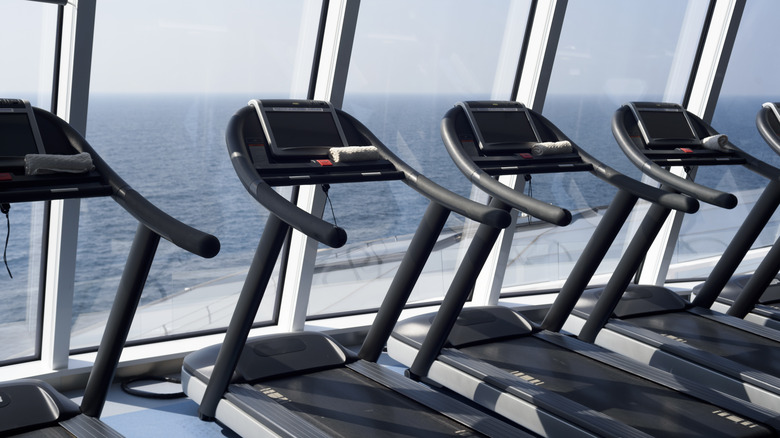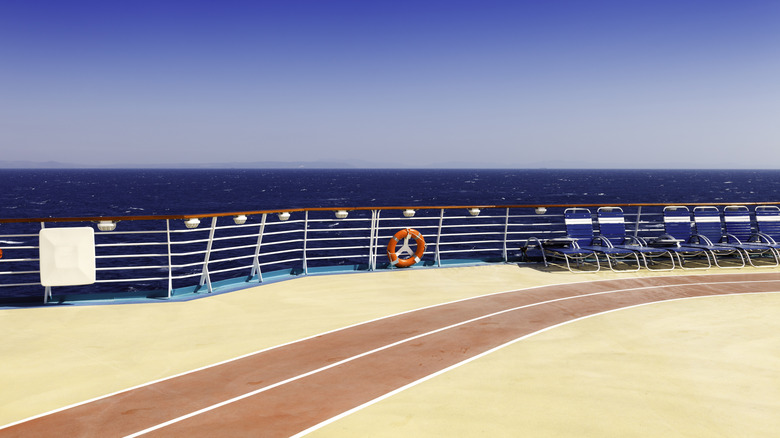Although cruises are often associated with rest and relaxation, some of us see a cruise as an opportunity to get moving. Nowadays, most cruises offer gyms, running tracks, and fitness classes to help sailers stay in shape. Some cruises even have exercise-related themes for those looking to level up their standard workouts.
Overlooking the ocean during your daily run can be a lot more inspiring than the drab view you might get at your gym back home. However, watching the waves crash while logging steps on a treadmill might not always be a good thing — no matter how beautiful the view is.
According to Medical News Today, treadmills and other machines that involve continuous movement may trigger dizziness and vertigo. Moreover, some cruise treadmills are more likely to trigger motion sickness than others, similar to how the room you book could exacerbate motion sickness. If you don’t want to deal with post-workout nausea, you’ll want to take extra care when choosing your machine.
Avoid these treadmills to keep motion sickness at bay

Motion sickness occurs when your body anticipates one motion but feels another. This discrepancy can take place when the movement sensed by your eyes and inner ear don’t match up. Cruise passengers are susceptible to motion sickness thanks to the ship’s movement on the rough seas, and those who hop on treadmills facing away from the front of the ship are especially likely to feel queasy after a run.
When you jog on a treadmill placed perpendicular to the vessel, where you’re facing the side of the ship (and getting that amazing view of the water out of the window), your body may feel as if it’s moving in two different directions: You’re running one way while being pulled by the ship in the other. The visual information you receive when watching the ocean move sideways in front of you makes matters even more confusing for your body.
When you enter your cruise’s gym, take note of which direction the ship is moving in. Then, choose a treadmill facing the same direction. If there are no forward-facing machines available, your next best option is a machine placed away from windows.
Other places to run while on a cruise

Since treadmills are known to trigger motion sickness in some runners, they might not be your best bet when traveling on a cruise ship. Thankfully, many lines offer a variety of places to get your 10,000 daily steps in.
Running tracks can be a great alternative to fitness center treadmills and allow you to move in various directions around the path. The tracks are often located on the pool decks and can usually accommodate both walkers and joggers. For a bigger challenge, take advantage of the ship’s stairs. On large ships, such as Royal Caribbean’s mega-sized Icon of the Seas, you’ll find over a dozen decks, each connected via a staircase. A few runs between floors will easily work up a sweat.
Finally, don’t overlook the ports of call when planning your exercise regimen. Jogging around a port destination can be a great way to do some sightseeing while squeezing in a workout. Research the area first to pinpoint safe places to run (such as beaches or city sidewalks) and which spots to avoid (such as high-traffic streets or nature reserves with dangerous wildlife).

